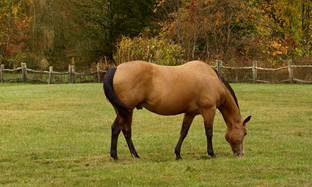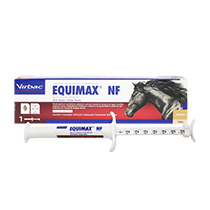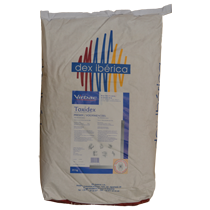
Horse colic: how to keep your horse healthy
Change in diet, poor blood circulation, parasites, anything is enough for the balance of the intestinal transit to be disrupted.
As we already know, the digestive system of the horse is very sensitive. However, it is possible to contribute to its good health through proper food and management.
For millions of years, equines have adapted to their natural environment, developing a very special digestive system, comparable to no other animal species. Following their domestication and the changes it has brought in their way of life and their nutrition, this singular digestive system has become their Archilles heel.
Every horse owner fears colic, this set of abdominal pains with very different origins.
Knowing the anatomy and the function of the digestive system helps to better understand its extreme sensitivity.
In its natural state, a horse spends most of its day grazing, eating grass, twigs and vegetables of all kinds, but mostly rich in crude fiber and low in carbohydrates and protein. This food is longly chewed and soaked with saliva before being swallowed. Thus, the stomach is continually filled with small amounts of food.
This is the first fundamental difference with respect to current ‘captivity’ conditions in which horses are fed only two to three times a day, thus occasionally loading the digestive system with large quantities of high-energy concentrated feed.
Food is first stirred quickly in the stomach, mashed and impregnated with gastric juice before passing into the intestine.
The stomach measures about 30 meters long, a long way filled with curves, variations of diameter…, these elements being conducive to slowdowns and ‘traffic jams’.
First, we encounter the small intestine, which can be 20 meters long. It is permanently active and is divided into 3 parts: the first, immediately after the exit of the stomach, is the duodenum, and the next two parts being the jejunum and the ileum.
Enzymes in the small intestine turn chopped foods into readily digestible substances. These than pass into the blood via the intestinal mucosa.
In case of distribution of a large quantity of concentrated foods, these will pass too quickly through the small intestine, reducing the ‘transformation work’ of the enzymes, leading to a risk of digestive disorders. It is, among other things, to limit this phenomenon that it is always recommended to distribute the feed before the concentrates, in order to modulate as much as possible the assimilation of the fast sugars present in the concentrates.
The raw, fiber-rich vegetable fibers found in grass and hay, which are not broken down by the enzymes, are directed to the next station: the large intestine.
The large intestine is divided into 4 parts: the cecum, the large colon, the small colon and the rectum.
This is where the intestinal flora, a mixture of microorganisms and bacteria, transforms the remaining plant fibers into energy, through fermentation.
Even though the large intestine, only 8 meters long, is significantly shorter than the small intestine, it stores food for up to 48 hours, as in a large fermentation chamber. Near the terminus, in the rectum, the contents of the intestine are dehydrated. The residues are molded before being evacuated and appear in the open in the form of dung.





